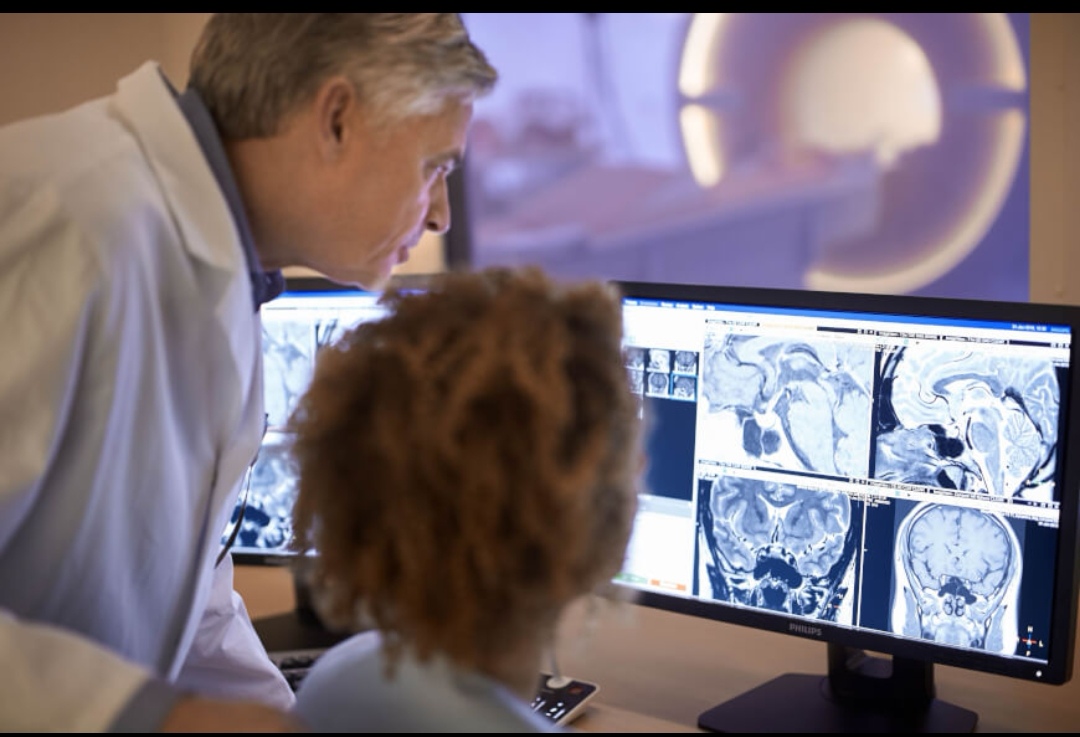The program is a professional degree that enables candidates to specialize in the area of diagnostic radiology.
The candidates should achieve satisfactory levels of basic knowledge and clinical background in all sub-specialities in radiology practice, interact with community problems, respect ethical values according to community culture, and promote their medical
standards through engaging in continuing medical education. The program also aims to
introduce the candidate to the basics of scientific medical research.
Patient Safety
• Must be placed at the centre of healthcare
• High quality patient care depends, among other aspects of practice, on effective multidisciplinary team working
• Learning in, and from, clinical practice is the most effective way for professionals to develop much of their expertise.

Five years.
The students should participate in the scientific activities of the departments such as:
• Journal club once every one- two weeks.
• Seminars (including recent topics and controversial issues) once weekly. Students are expected to participate in the discussions.
• Scientific meetings arranged by the department
• Attendance of Thesis discussions
• Others sharing in the annual meeting scientific department and the joint meeting with other departments.
• Each activity is monitored and registered in training logbook.
1 -To provide appropriate knowledge of the physical, cellular and molecular principles that underpins all modalities of diagnostic imaging. The syllabus will equip the learner to choose and rationally apply appropriate imaging techniques to clinical problems, based upon understanding of the scientific basis of each modality.
2- Undertaking the syllabus will enable the learner to describe how the concepts of risk, safety and quality apply in these imaging modalities. These include the responsibilities of individuals and organisations to ensure that appropriate working environments, monitoring and training are in place to ensure patient and staff safety.
3- In addition to understanding the principles of each imaging modality, the syllabus will assist learners in selecting optimal operating factors and help them to interpret the images produced, prior to communicating the results and discussing the process with professional colleagues. Complete understanding of the principles underlying the imaging process will form the basis of radiologists updating their knowledge throughout their careers, enabling them to remain current as new imaging techniques are introduced and clinical pathways evolve.
The syllabus is intended as a guide and general indication to the breadth of the topics that may appear in the examination questions. It is not a teaching plan and the bullet points do not relate to equal amounts of study time.
Those who have followed this section of the syllabus should be able to:
1- Describe the structure and properties of matter, the phenomena of radioactivity and magnetism, the nature of ionising radiation, radiofrequency radiation, optical imaging and ultrasound and how they interact with matter and the differences between ionising and non-ionising radiation.
2- Distinguish and compare between different types of diagnostic medical image and understand how such images are created, reconstructed, processed, transmitted, stored and displayed.
3-Describe the construction and function of medical imaging equipment including the radiation, optical or ultrasound source, image-forming components and image or signal receptor and detectors used for QA and monitoring.
4- Indicate how imaging equipment is operated and describe the imaging techniques that are performed with such equipment.
5 -Identify and compare the type of information contained in images from different modalities.
6- Distinguish between different indices of image quality, explain how they are inter-related and indicate how they are affected by changing the operating factors of imaging equipment.
7 -Identify agents that are used to enhance image contrast and explain their action.
8-Explain how the performance of imaging equipment is measured and expressed.
9- Describe the principles of quality assurance and outline how quality control tests of imaging equipment are performed and interpreted.
10- Recognise artefacts in medical images and identify how they are removed or their impact is reduced.
11- Recognise the hazards and risks to patients, members of staff and members of the public associated with medical imaging and describe how their impact is reduced without compromising diagnostic image quality.
12- Identify the major pieces of UK legislation and guidance that affect the practice of medical imaging and interpret their requirements.
13- Describe the biological processes in disease that can be probed with functional and molecular imaging
14- Understand the concepts relevant to improving patient related outcomes.
icpscollege 2021 | All Rights Reserved. By M.sakr Design & Developed by Themesglance